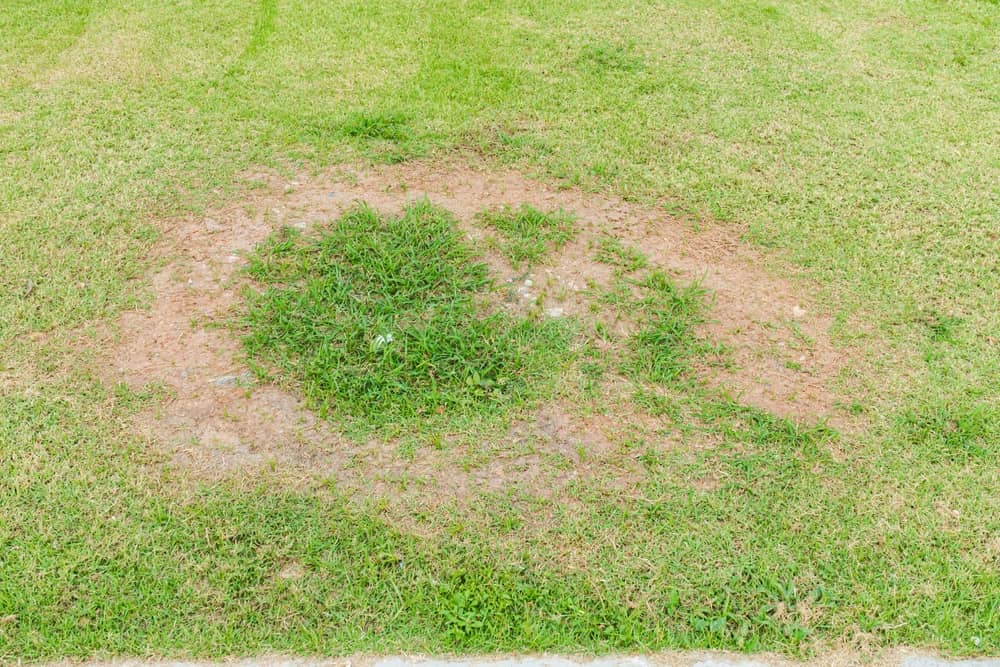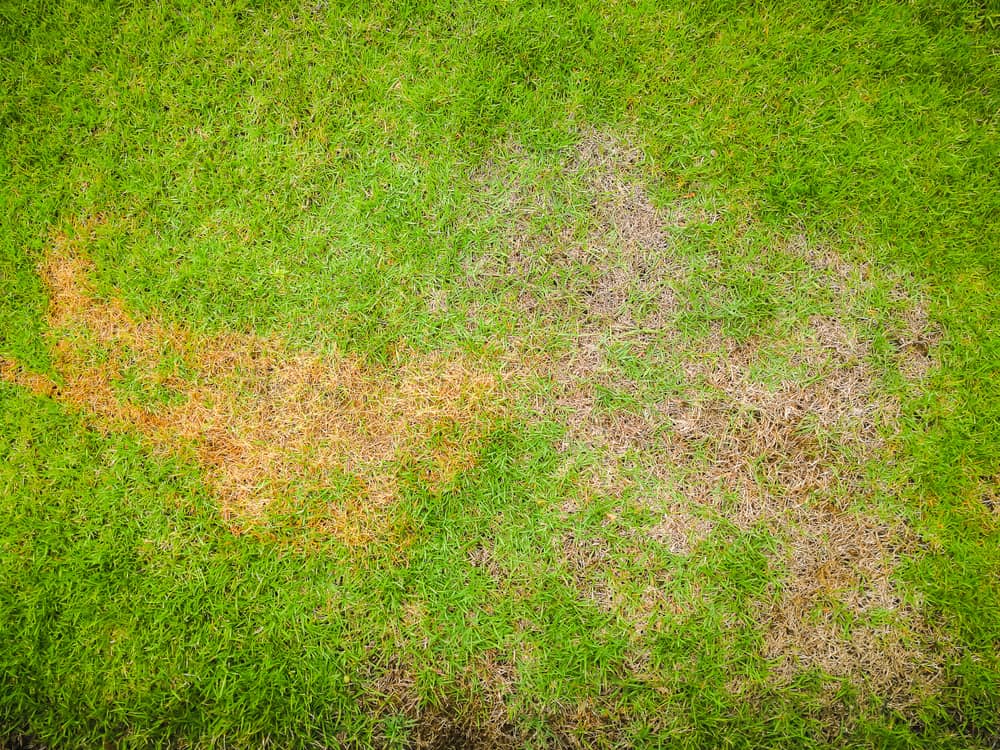
Large patch disease is a common fungal disease that affects warm-season turfgrasses, such as bermuda grass, zoysia grass, and St. Augustine grass. The disease is caused by the fungus Rhizoctonia solani and typically appears as circular or irregularly shaped patches in the lawn that can range in size from a few inches to several feet in diameter.
The fungus can survive in infected plant debris and soil for a long time, and it can spread through water, wind, or contaminated equipment. Environmental factors can also contribute to the development of large patch disease. These factors include excessive soil moisture, poor drainage, and heavy thatch buildup. Over-fertilization, particularly with nitrogen, can also increase the likelihood of large patch disease.
Overall, the development of large patch disease is influenced by a combination of environmental conditions and the presence of the fungal pathogen in the lawn.
The patches are often tan or brown in color and may have a reddish-brown border. The affected grass in the patch may initially appear water-soaked and wilted, but as the disease progresses, it turns brown and dies. Large patch disease is most common in the fall and spring when temperatures are cool and the grass is growing slowly.

To manage and prevent large patch disease in lawns, it is important to maintain proper lawn care practices such as watering deeply and infrequently, avoiding excessive nitrogen fertilization and minimizing soil compaction. Fungicides may also be applied preventively or curatively to control the disease, but they should be used in conjunction with other cultural practices for best results. Headway, Eagle, Armada and Pillar are great products designed to tackle fungal disease both preventatively and curatively.
Armada 50 WDG is supplied in the form of water-dispersible granules, requiring a mixture with water for application via a backpack sprayer. Alternatively, you have the option of choosing granular products like Headway, Eagle, and Pillar, which necessitate distribution using a suitable spreader.
In some cases, it can be beneficial to rotate between these products to prevent diseases from developing resistance to a particular fungicide and to avoid exposing them to a single product exclusively.
There might be a need for a second application of fungicide. Generally, fungicides remain active in the soil for approximately 21–28 days. If your lawn has previously experienced a disease outbreak, pathogens could still be present in the soil, especially following prolonged periods of rainfall within the initial 21–28 days. Conversely, if rainfall has been limited, the effectiveness of the fungicide may persist for a longer duration.
Refer to our care guides here for a full list of maintenance information. Carolina Fresh Farms also has many lawn and landscape experts who can answer any of your questions and make product recommendations. Contact your local outlet here.
Related Products
Sorry, we couldn't find any posts. Please try a different search.
